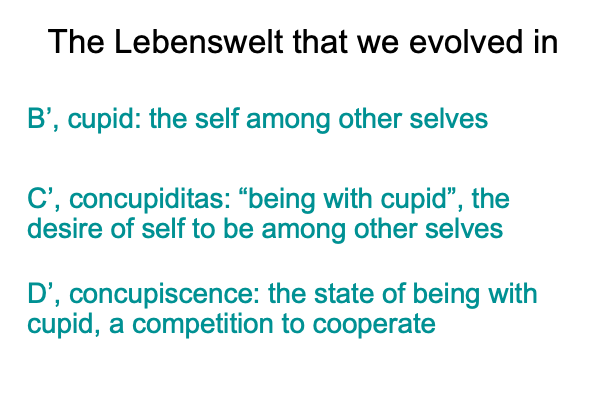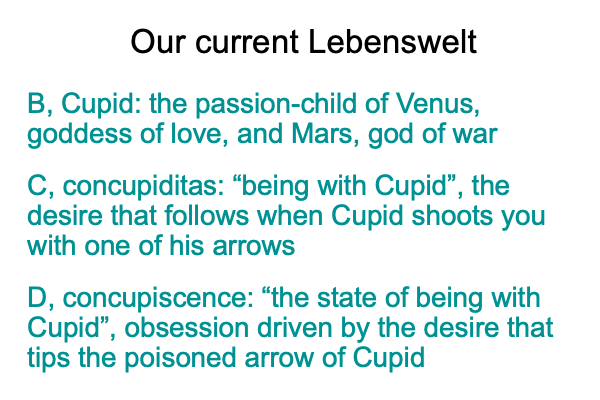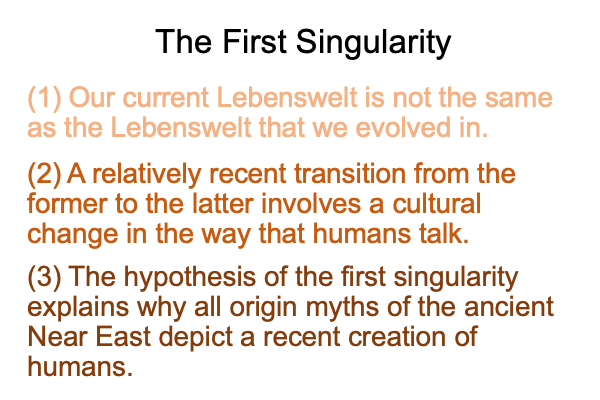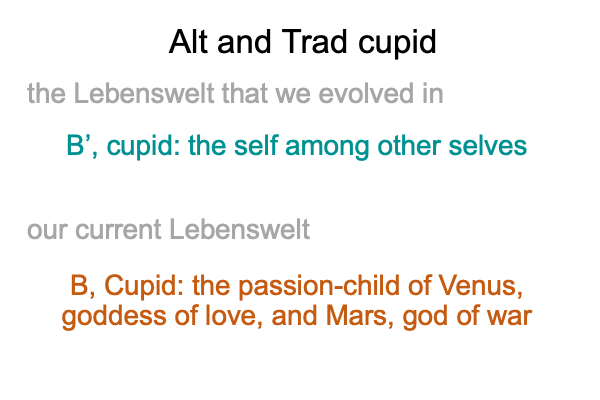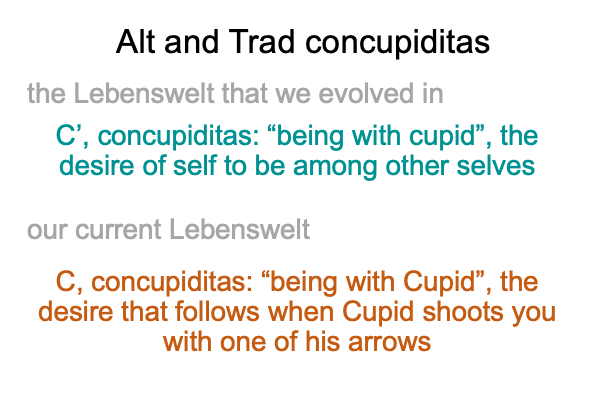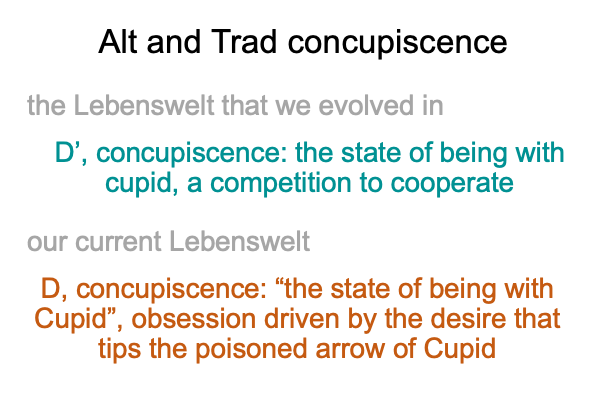Looking at Daryl Domning’s Book (2006) “Original Selfishness” (Part 11 of 16)
0062 When I re-articulate Domning’s foundational diagram (figure 10.1) using the development of the term, “selfishness”; I end up making the same points that Domning makes.

0063 When I re-articulate Domning’s foundational diagram using the components of the term, “concupiscence”; I end up with a scenario that is completely different.
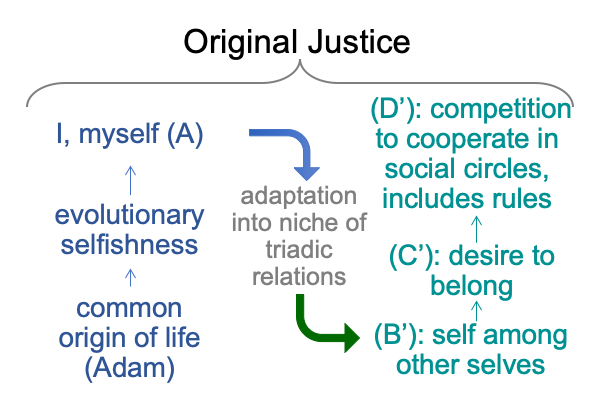
0064 In fact, my technical definitions of cupid (B’), concupiditas (C’) and concupiscence (D’) appear to be inversions of traditional definitions of the same words.
More on that, later.
0065 Right now, I want to dwell on the idea that the self is what ought to be, imbued with secondness, in an innate judgment. Because what ought to be is assigned to the category of secondness, it becomes an actuality, the internal self (B) and the external cupid (B’).
0066 Domning warns against reductionism in chapter eight, on evolution and human behavior.
0067 For example, the claim that our somatic selves exist only to perpetuate our “selfish” DNA is a contemporary popular reduction. It is technically correct, since our somatic selves are adaptations into the niche of perpetuating DNA through self-preservation and reproductive success.
But, this reduction is misleading, since this reduction is used to veil later ultimate niches, such as the one that encourages the adaptations of sea cows and the one that encourages the adaptations of hominins.
0068 Similarly, my claim that our somatic selves are really adaptations into the niche of triadic relations and that our perceptions of our own somatic selves are adaptations into the potential of judgment, is also reductionist and technically correct.
But, this reduction is revealing, because it shows that original selfishness does not “evolve” into the self. Rather, original selfishness is what is, the self is what ought to be, and consolidation is the relation.
The word, “consolidation”, is composed of “con-” (with), “solid” (a state of matter) and “-ation” (the process of becoming). Consolidation3 transforms the potential of diverse exhibitions of the emphatic, I-myself1 (A), into the solidity of a unitary self2 (B).
0069 In human evolution, the ability to make this judgment increases self-preservation and enhances reproductive success.
But, the ability does not derive from self-preservation and reproductive success, per se.
The ability derives from the realness of immaterial triadic relations.
0070 The masterwork, The Human Niche, changes the landscape beneath Domning’s argument.
Domning separates the universal and moral realities of original sin, using terminology that supports a re-conceptualization of original sin.
Here, I repeat Domning’s procedure with different terminology and end up supporting a re-conceptualization of Aquinas’s notion of original justice.
This is the topic of the next blog.

